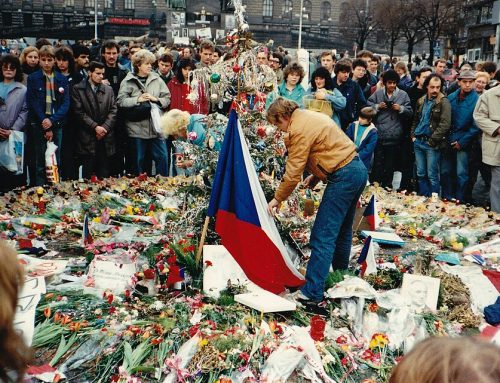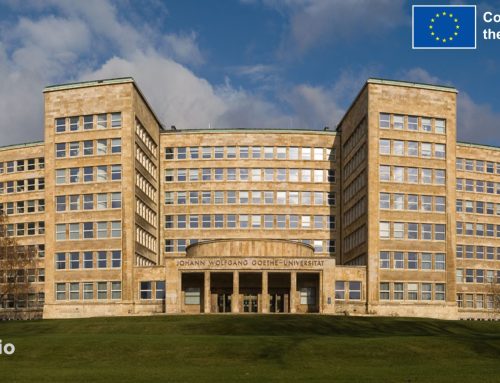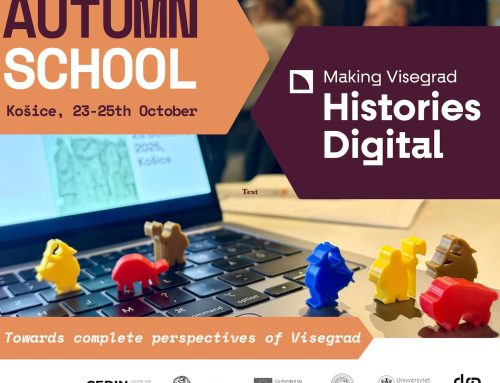On 8 June 2023, EuroClio hosted a webinar panel discussion addressing the experiences of women and children during wartime. This session was organised within the framework of a EuroClio-partnered project called REMEMCHILD, which aims to give a voice to women and children and recognize their experiences and memories of wartime in Europe.
This panel featured Andrea Pető and Elma Hasimbegovic. Andrea Pető is a Professor in the Department of Gender Studies at Central European University in Vienna, Austria. She teaches courses on European comparative social and gender history, gender and politics, women’s movements, qualitative methods, oral history, and the Holocaust. Elma Hasimbegovic is a historian and museum professional. She has worked at the History Museum of Bosnia and Herzegovina and has held the position of museum director since 2013. Elma is also a member of the National Commission of Bosnia and Herzegovina for Cooperation with UNESCO and a member of the steering board of the Balkan Museum Network.
Andrea opened the panel by discussing the challenges facing the historic remembrance and memorialization of women during wartime. Her discussion was centred around the experiences of Hungarian women during the Second World War as well as the illiberal turn taking place in modern Hungary. The first major challenge that historians face relates to the return to hegemonic, nationalist historical narratives. Andrea explained that in recent years, the debate around “truth” and “fake news” has prompted many populist states to wage “mnemonic wars” amidst historical narratives, manipulating historical memory in a way that favours certain political aims. In turn, this leads to another challenge that directly impacts feminist historiography and gender history. Andrea described this second challenge as the “Herstory turn,” which encapsulates the tendency of illiberal states to present women as “mothers” of the nation or “sacrificing” themselves for the nation, trivialising and exploiting female historical experiences for political reasons.
Andrea then introduced two projects that attempt to counter these challenges. The first is a secondary school textbook entitled, “Teaching with Memories.” This textbook was the result of cooperation between various European women’s studies professionals who sought to promote discussion around women’s and children’s experiences during wartime. The textbook consists of objects that are part of family histories. Students are positioned as storytellers and must collect a story related to a certain object. Through this book, students can discuss women’s roles in history and the family with concrete, contextualised stories. This approach situates the wartime experiences of women as a central link between history education and present-day communities in a way that ultimately redefines distance and time.
The second project Andrea discussed is a memorial project taking place in Budapest for women victims of wartime sexual violence, which challenges Hungary’s illiberal political system. The municipal of Budapest decided to create a memorial for victims of sexual violence to counteract the discourse around the experience of women during the Second World War. Andrea concluded her discussion by acknowledging that while this project is an effective step towards recognizing the female experience during wartime, the memorial did not capture the community of remembrance in the way that it sought to, as the design does not reflect the popular opinion of the public.
Following Andrea’s discussion, Elma presented on women and children during the 90’s war in Bosnia and Herzegovina and the challenges facing Bosnian society and institutions. The 90’s war in Bosnia and Herzegovina is a much more recent past than the Second World War, and with that comes a different set of challenges. The conflict remains very present in public spaces. Survivors and proceeding generations continue to live with the trauma of war, while the memory of the conflict is instrumentalised politically. Due to the recency of the conflict, there is very little systematic research conducted on institutional levels. Elma explained that the History Museum of Bosnia and Herzegovina has also struggled with financial and legal problems because of the politicisation of this topic.
Elma went on to speak about the History Museum of Bosnia and Herzegovina and its permanent exhibition on the siege of Sarajevo. The exhibition deals with the daily life of citizens, including the strength and survival skills developed because of the siege. Many of the photographs on display at the exhibition depict the resilience of women during this period. A section of the exhibition is also dedicated to children, which uses different sources to talk about the daily life of childhood, schooling, and play during the war, as well as the massacres where children were killed in school. The exhibition displays a collection of children’s diaries and drawings produced during the siege.
Elma also spoke about other initiatives and memorials to honour children as victims of war in Bosnia and Herzegovina. The Institute for Genocide and Mass Crimes came up with the names of 552 children killed and put them on display on a monument, though currently it is believed that up to 1601 children died because of the war. The War Childhood Museum also seeks to memorialise children victims of war by collecting the donated objects of nowadays adult people who were children during war and having them share their stories. Additionally, the History Museum of Bosnia and Herzegovina is currently working on a memorial room for killed children, which will also display collected objects as well as feature the stories from parents about what their children’s lives were like before they died. This exhibit is meant to focus on the personhood and individuality of these children, rather than their victimhood. The last thing Elma discussed was the Forgotten Children of War, an association made up of young adults born out of wartime sexual violence in Bosnia and Herzegovina. The association is working to overcome trauma and be recognised as victims of the war by sharing their stories publically and providing testimonies.
The event wrapped up with a Q & A in which a participant asked the question: As a history teacher, how should I teach about women and children during war? Andrea responded by stating that the teaching must be done in cooperation and in dialogue with the wider community. Her advice was to talk to people in the community and ask about what objects are important to them and why. Elma responded by stating that when working with younger students, offer them workshops that allow them to engage with objects and documents of the war rather than discussing the victimisation and scale of the tragedy.
EuroClio would like to thank our panellists, Andrea Pető and Elma Hasimbegovic, as well as the participants for joining us in this important discussion surrounding the experience of women and children during wartime.













